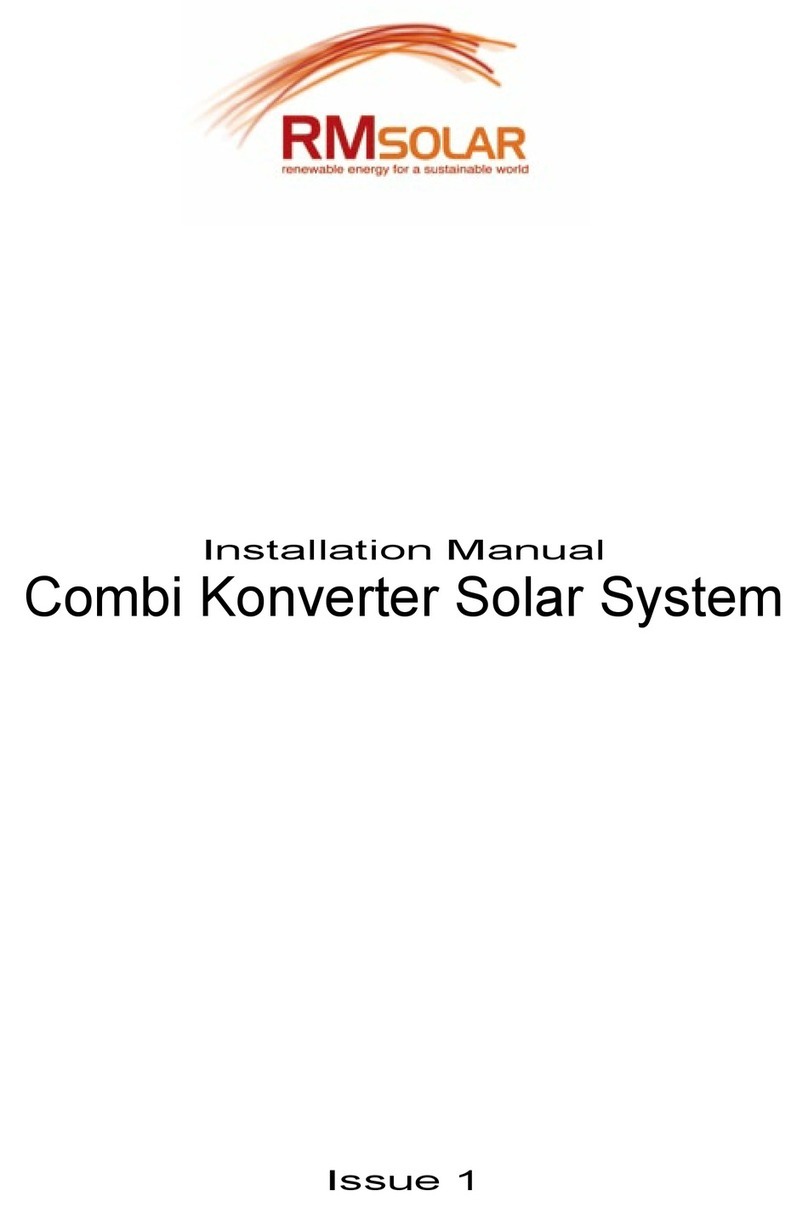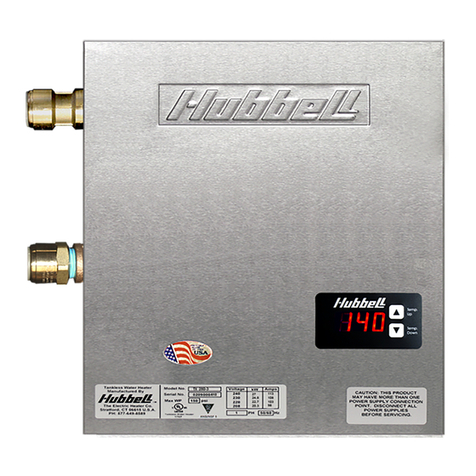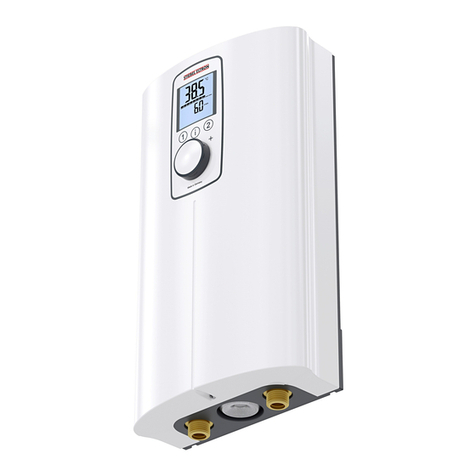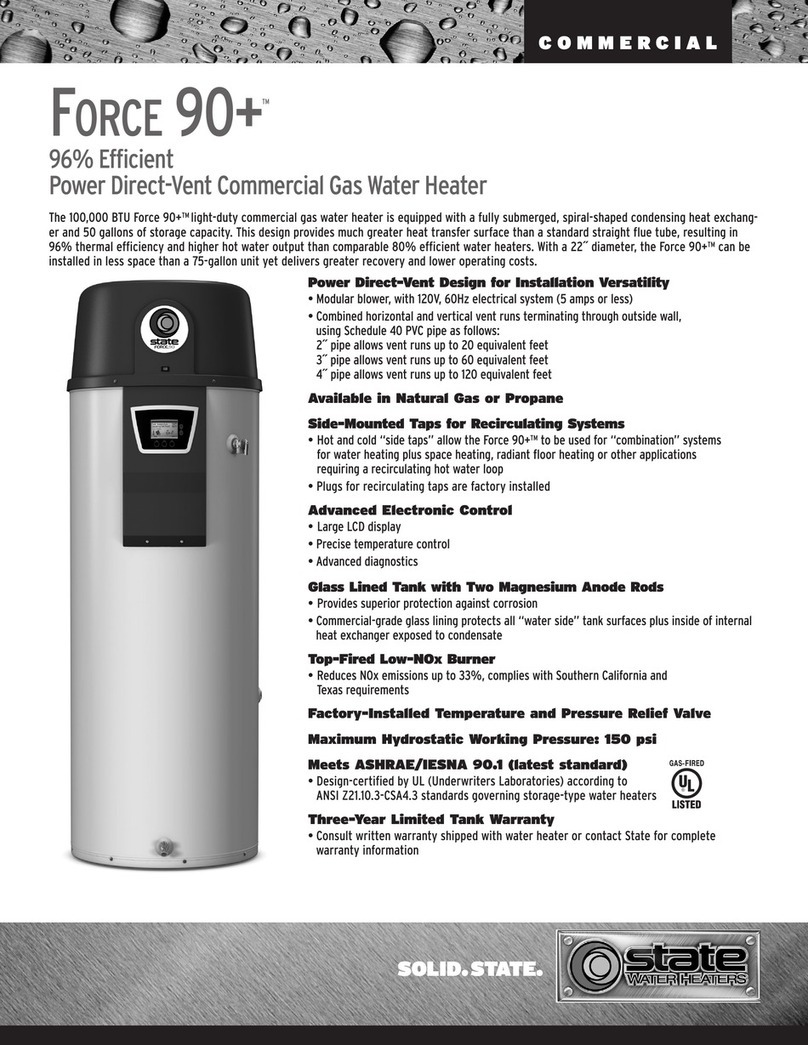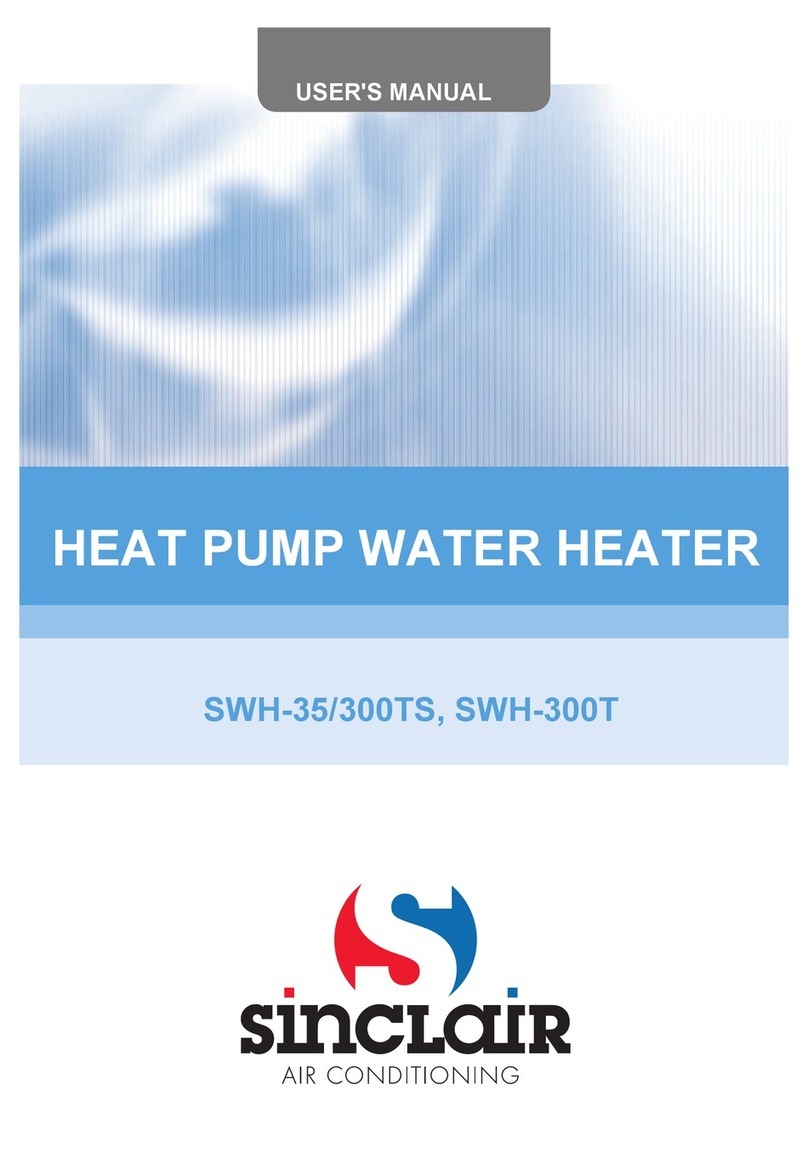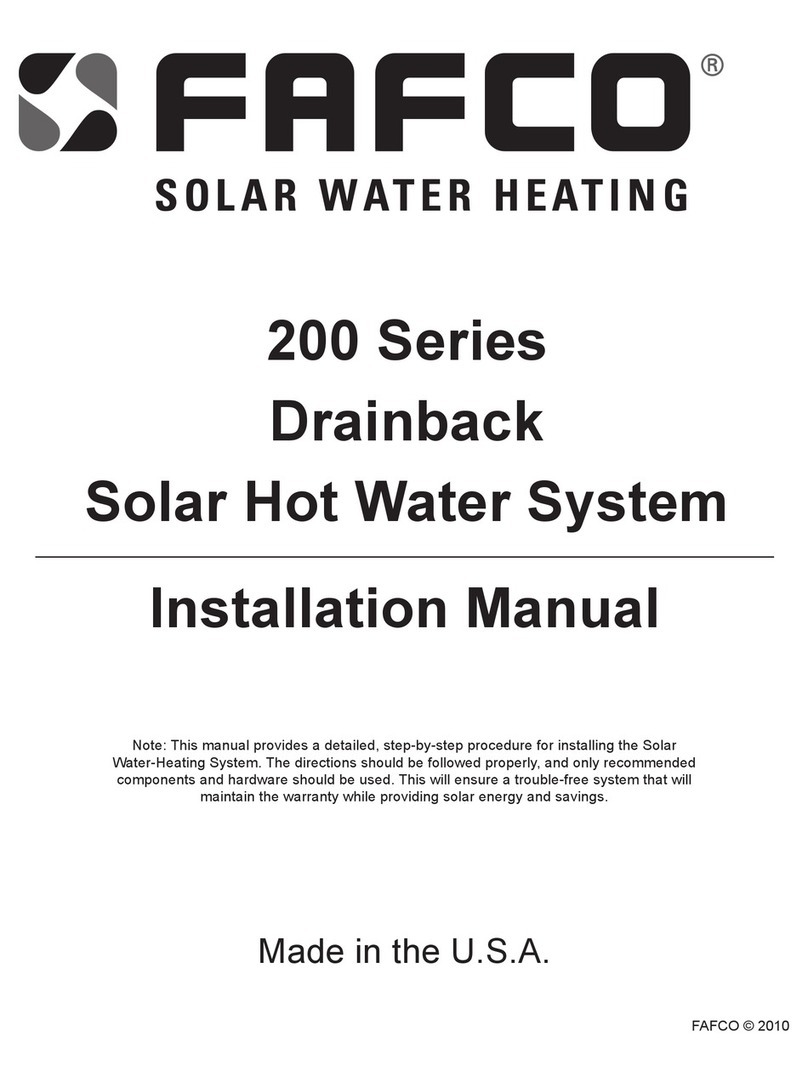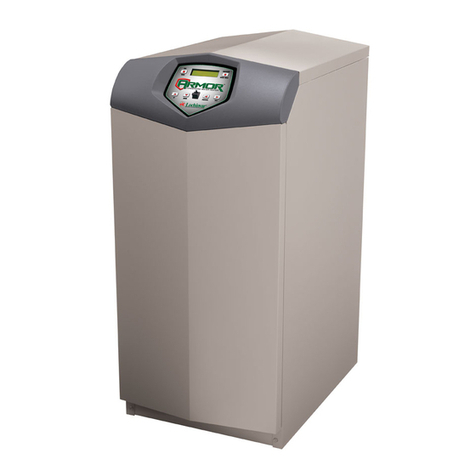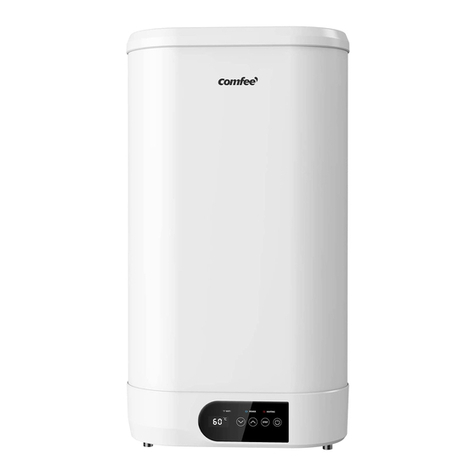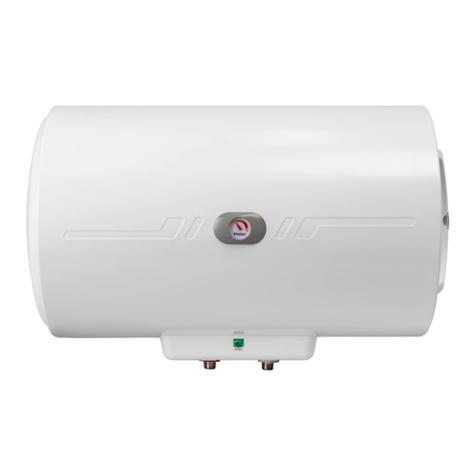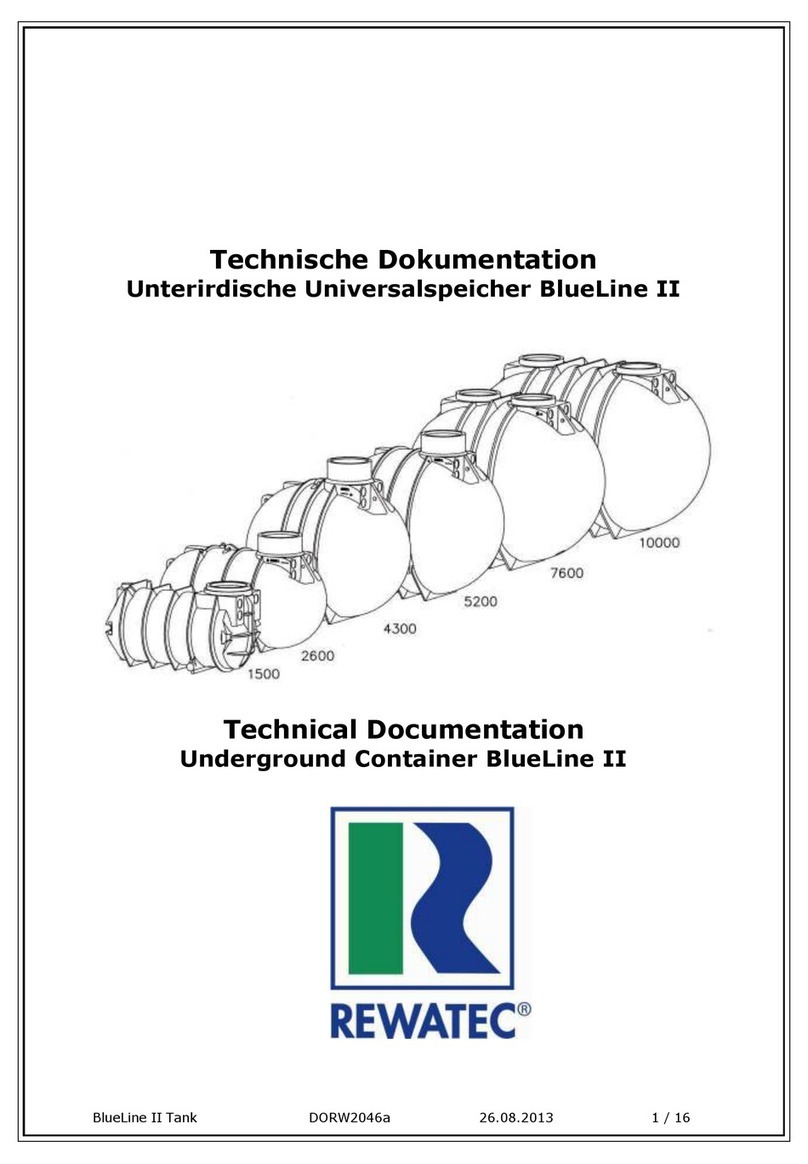
Torus SG DOSG0040 25.02.2013 4 / 12
1. Location
1.1 Position in relation to uildings
The ex avated pit should not be lo ated within a minimum distan e from a building, see
Se tion 3, Image 1. A stru ture may only be built over the tank if the loads during
onstru tion do not ex eed the traffi loads.
1.2 Traffic conditions
Load lass A15 (pedestrians, y lists): no spe ial equipment required.
Load lass B (passenger ars, minibus, maximum axle load – 2.2 tonnes) Minimum
distan e from the top of the tank to the ground surfa e: 600 mm Additional information
is provided in the te hni al do umentation for the DN 300 Professional Shaft Extension.
1.3 Ground conditions
The tanks may only be submerged up to the top of the tank (“shoulder height”; see
illustrations in Se tion 4) in ground water or a high water table. The installation depth
must be at least half as deep as the immersion depth in the ground water / high water
table (negative buoyan y).
With suspended (“liquefied”) lay soil, the immersion depth may not ex eed 150 mm.
1.4 Slopes
The soil in the area must be inspe ted and he ked for stability (DIN 1054 Edition
1/2003, E DIN 4084 Edition 11/2002) and stabilised with a retaining system (i.e. a wall)
if ne essary. Additional information is available from lo al publi authorities and
onstru tion ompanies.
1.5 Excavation
In firm, ompa t soil with an ex avation pit up to 1.75 m deep (measurement A3 in
figure 2 and 15a and 15b in Se tion 3), no angle of repose is ne essary. The working
area should be wide enough so that the filling material an be ompa ted (200 mm in
Figure 2 in Se tion 3). For depths larger than 1.75 m, a 500 mm working area must be
maintained; the tank is to be surrounded by a layer of ba kfill material at least 300 mm
thi k (Figure 15b in Se tion 3).
For loose soils ( oarse sand, gravel), the information above applies for an ex avation pit
depth of 1.25 m or larger (Figure 15a Se tion 3).
Even when the working area width measures 500 mm, the installation steps illustrated in
Se tion 3 in images 3 to 13 as well as the illustrations 14, 15a and 15b must be
followed.
1.6. Additional criteria
Any existing ables, pipes, vegetation or other spe ial features present must be taken
into a ount so as to avoid any possible impairments or risks. The soil above the top of
the tank (Se tion 4) may be up to 1.5 m deep.
2. Underground installation
2.1. Backfilling material around the tank
Bedding/en asement: Se tion 3
The ba kfilling material must be ompa table and permeable to water, it must reate a
solid ompa tion and be free of sharp obje ts whi h may damage the surfa e of the tank.
If the ba kfilling material in ludes pie es with sharp or pointed edges, the tank surfa e
must be prote ted with a sand oating.
2.1.1 Sand and gravel mixtures (SW and GW in a ordan e with DIN 18196 and ENV
1046) are the least expensive ba kfilling materials, be ause they have a grading urve
that in ludes many different parti le sizes, even with a small amount of fine parti les
(fine parti les: less than Ø 0.06mm). From a mesh size of the smallest parti les
(simplified Ø) to a mesh size of the largest parti les: for example 0/32, 2/16, 2/8, 2/32,
or 4/16.












